#qr code manufacturer
Explore tagged Tumblr posts
Text
How To Create a Simple Customer Referral Program?
Counterfeit products are harmful for buyers, businesses and economies worldwide. To combat this issue barcode scanners are emerging as a powerful tool in the fight against counterfeit goods.

#dynamic qr code#qr code manufacturer#brand protection#anti-counterfeit solutions#customer loyalty programs#qr code provider#qr code provider in india#customized solution#label provider in india#anti-counterfeit solution company#anti-counterfeit technologies#anti-counterfeiting solutions in india#industrial tags manufacturer#e-warranty#data analysis#cash transfer#customer loyalty service#track & trace services#raffle#run survey#build loyalty#digital marketing#software development#digital marketing services#qr code maker#qr code generator#qr code generator with logo#qr code generator online#custom qr code generator#custom packaging for small business
0 notes
Text
The Role of Hologram Labels in Brand Protection
Hologram labels serve as a crucial element in safeguarding products from counterfeiting and forgery. With their unique optical properties and tamper-evident features, these labels provide brands with a robust defense against illicit activities. By incorporating physical and digital security measures, holographic labels offer comprehensive protection that extends from preventing duplication to enabling traceability throughout the supply chain.
To sum up, holographic security stickers are an increasingly effective tool in the battle against fraud and counterfeiting. They are essential resources for firms looking to safeguard their goods and maintain customer confidence because of their capacity to improve product security, confirm authenticity, and discourage illegal activity. Holographic security stickers will play a more important role as technology develops, providing creative ways to address the persistent issue of counterfeiting in the global economy.
#security holograms sticker#Hologram Sticker manufacturer#Hologram Sticker supplier#QR code hologram Stickers#Hologram sticker provider#Hologram label
0 notes
Text
"Clothing tags, travel cards, hotel room key cards, parcel labels … a whole host of components in supply chains of everything from cars to clothes. What do they have in common? RFID tags.
Every RFID (Radio Frequency Identification) tag contains a microchip and a tiny metal strip of an antenna. A cool 18bn of these are made – and disposed of – each year. And with demands for product traceability increasing, ironically in part because of concerns for the social and environmental health of the supply chain, that’s set to soar.
And guess where most of these tags end up? Yup, landfill – adding to the burgeoning volumes of e-waste polluting our soils, rivers and skies. It’s a sorry tale, but it’s one in which two young graduates of Imperial College London and Royal College of Art are putting a great big green twist. Under the name of PulpaTronics, Chloe So and Barna Soma Biro reckon they’ve hit on a beguilingly simple sounding solution: make the tags out of paper. No plastic, no chips, no metal strips. Just paper, pure and … simple … ? Well, not quite, as we shall see.
The apparent simplicity is achieved by some pretty cutting-edge technical innovation, aimed at stripping away both the metal antennae and the chips. If you can get rid of those, as Biro explains, you solve the e-waste problem at a stroke. But getting rid of things isn’t the typical approach to technical solutions, he adds. “I read a paper in Nature that set out how humans have a bias for solving problems through addition – by adding something new, rather than removing complexity, even if that’s the best approach.”
And adding stuff to a world already stuffed, as it were, can create more problems than it solves. “So that became one of the guiding principles of PulpaTronics”, he says: stripping things down “to the bare minimum, where they are still functional, but have as low an environmental impact as possible”.
...how did they achieve this magical simplification? The answer lies in lasers: these turn the paper into a conductive material, Biro explains, printing a pattern on the surface that can be ‘read’ by a scanner, rather like a QR code. It sounds like frontier technology, but it works, and PulpaTronics have patents pending to protect it.
The resulting tag comes in two forms: in one, there is still a microchip, so that it can be read by existing scanners of the sort common within retailers, for example. The more advanced version does away with the chip altogether. This will need a different kind of scanner, currently in development, which PulpaTronics envisages issuing licences for others to manufacture.
Crucially, the cost of both versions is significantly cheaper than existing RFID kit – making this a highly viable proposition. Then there are the carbon savings: up to 70% for the chipless version – so a no-brainer from a sustainability viewpoint too. All the same, industry interest was slow to start with but when PulpaTronics won a coveted Dezeen magazine award in late 2023, it snowballed, says So. Big brands such as UPS, DHL, Marks & Spencer and Decathlon came calling. “We were just bombarded.” Brands were fascinated by the innovation, she says, but even more by the price point, “because, like any business, they knew that green products can’t come with a premium”."
-via Positive.News, April 29, 2024
--
Note: I know it's still in the very early stages, but this is such a relief to see in the context of the environmental and human rights catastrophes associated with lithium mining and mining for rare earth metals, and the way that EVs and other green infrastructure are massively increasing the demand for those materials.
I'll take a future with paper-based, more humane alternatives for sure! Fingers crossed this keeps developing and develops well (and quickly).
#I do really wish it could be read by regular scanners already though#that's what I thought at first#and that would've been fucking amazing#but this is still pretty cool#electronics#science and technology#green technology#ewaste#landfill#lithium#lithium mining#human rights#environment#climate action#climate hope#rfid#rfid technology#rfid tags#good news#hope
451 notes
·
View notes
Text
youtube
i'm not even into makeup and this is insane. the kickstarter runners really tried to pass off lisa frank postcards with QR codes for a lisa frank app as vintage 90s collectibles because QR codes were technically invented in 1994 (it was being used for japanese automobile manufacturing)
135 notes
·
View notes
Note
Do you have any tips or advice for running an artists booth at a convention? I'm thinking about doing it eventually and been wanting to hear from people who have done it before :^)
yeah!!! lemme rattle off a few things off the top a my head also, pardon me 4 using amazon dot ca links for products that i mention. its just easy to find references that way (and often u can look up the brand and find their non-amazon store etc etc)
this got super long so im putting it under a cut!!
• join an artist alley group!! i'm in this artist alley discord and it is a fantastic place to get info about cons, table display ideas, manufacturer recommendations, etc. there are more than just this group out there and i think there are bigger ones but i personally really like this one ^u^ i make a ton of use of the display resources and manu recommendation channels!
• if you can afford it, be choosy about the events you apply to. there are a lot of cons out there that are fantastic, and a lot that aren't worth the trouble, and i don't necessarily mean small vs big cons. some of my fav events are smaller artist alleys local to me, and most of the artists i know avoid informa (fanexpo) like the plague. check out what other artists have to say about past events and keep an eye out for red flags: personally i find cons with really out of date/poorly advertised social medias and websites that have mismatched info are a warning sign of a mismanaged and not well attended event. • you don't need a lot of fancy display stuff to start, those sorts of things you can build up over time. im a fan of getting a ton of my display stuff from the dollar store >:)
when you're ready and need the space to display a good amount of art the main thing you wanna pick up is definitely something that gives your table some verticality, whether that's a pvc pipe style setup, pegboards, or modular cube shelving (we all used to use these big heavy grid ones until the plastic sheet covered ones came out and now we all use those. theyre cuter and lighter and fit better on a table and come in more colours yayay. im sure some people still like the grid ones since they fit gridwall accessories tho) there are lots of other ways to display stuff but these r what i am most familiar with. definitely helps to look at youtube and pinterest and discord groups for display ideas!!
another thing you will want to start is a tablecloth. not every con has their tables already covered! there are those plastic picnic ones at dollar stores, and you can thrift bedsheets/fabric too.
• depending on the type of display and art you do you'll need some way to attach signs/prints/charms/etc to your display. i just moved from blu-tack to magnets but i used to use sewing clips (back when i used the grid cubes) and before then masking tape. all of them are okay and cool! except blu-tack. don't make the same mistakes as me it adds like 40 whole minutes to teardown and it leaves gross oil on the prints after some time. evil
• if you don't have business cards you can make a sign with a qr code that links to you/your shop! there are lots of qr code makers online that u can even customize with images and colours and stuff. there will be people that wanna know how to find you again after a con!
• these days a lot of people don't bring cash to conventions and it's pretty vital to bring some sort of card reader or other digital payment method. most of us use square - they recently made it so that the phone app can accept tap! so you don't need to jump for the expensive physical readers. i've also got a paypal dot me qr code and my etransfer email (i think this is a canadian thing) on a lil sign on the table so people have lots of payment options. usually over 50% of my con income comes from non-cash sales!
• make sure to bring change!! we've forgotten in the past and done okay but it's always handy to be able to make change for people. you'll want a secure place to put cash as well, whether it's a locked moneybox that you keep out of sight or a place on your person (friend of mine uses a fanny pack!) you never wanna leave your table completely unattended but especially when it comes to the moneybox. if it's a multi day con this is an item you mustn't leave at your table overnight.
• keep count of your sales and expenses properly so that you can see how much you made at the end of the con. i really like spreadsheets but you can even just note it down in a book. here's a little example of one con for me:

• you'll want to make a checklist of stock and display stuff to bring, but don't forget to make a list of minor stuff like phone chargers and scissors and tape and glue and pens and paper. multiple types of tape and paper if possible. they don't feel super important until you're stuck because you forgot to make a price sign and have to get by with a sharpie and a napkin. don't let that be you!! dollar store sticky note pads are super useful for this type of thing.
• plan out your prices and do as much prep (counting, sign making, display planning, packing/sorting) as you can beforehand so that the event doesn't feel too stressful. make sure your merchandise is stored in an easily accessible way for you behind the table so you aren't scrambling or rummaging too much when people are asking for stuff!
• similarly, whatever you can leave out for people to just pick/grab themselves, the more of it you're likely to sell. things like stickers and charms are good for this - people like to touch stuff! and it makes it so you don't need to go fishing for items for people as frequently. generally i don't do this with more expensive items just to be safe.
• if you sell prints, people are gonna ask for sleeves to keep them safe, especially at outdoor events. sometimes people ask for sleeves/bags even if they dont buy anything. they're a good idea to have on hand and you can find em for pretty cheap online and for a bit more expensive at dollar stores (i use OPP bags. if you dont wanna use plastic you can always get paper bags/envelopes/glassine bags instead)
• a cushion for the chair is a good idea. lots of conventions have really uncomfy chairs. some folks even bring camping chairs instead!
• pack snacks/lunch/water/drinks/have lunch plans. if you have a table buddy that is able to run out for food that's always nice. you might be sitting but it uses a lot of energy to interface all day!! you'll be exhausted and hungry and it's gonna be important to get enough fuel for your brain to function properly. i genuinely would recommend juice/soda/coffee/energy dink alongside water and food if you wanna live, especially if its a multi day con. get good sleep on days between!
• if you're excited to do trades with other artists during the con, the general etiquette is to wait until later in the day/near the end when the crowds are winding down! it's always okay to ask if someone's doing trades, and don't be upset or press them if they aren't interested or have certain stuff they don't want to trade.
• speaking of con etiquette, depending on the type of vert you are (intro/extro) and or how much customer service experience you have, interfacing can be nervewracking. my general rule is that if they stop to look, i say Hello and let them browse. if they seem interested in my table i try and do some small talk. stuff like How are you/How's the event been for ya/compliments on their outfit/cosplay/merch they have on like pins etc are good! kids and old folks love this. as tiring as it is to do some of my favourite parts of cons is talking to nice people that like my art!! all the folks that say nice things about my work are what keep me drawing ;w; i keep my sketchbook with me to jot down/doodle nice and funny encounters just cus it makes me happy to look back on XD
• when it's teardown time try to put stuff away as neatly as you can. you might be tired and just wanna toss all your stuff into whatever it is you brought it in but i promise future you (especially next-con you) will be so thankful that you put all your price signs into one baggie etc etc.
• speaking of bringing and putting away merch - you'll need a way to get it all from your home/car to your table and back. lots of people use dollies and other types of utility cart (i can guarantee there are a bunch of those grandma grocery ones at your local thrift store!!) - i personally use a big luggage bag and a collapsible wagon, but back in the day we used to CARRY bin after bin of stuff from the car and back in multiple trips which i would NOT reccomend lol. not every convention hall is easily accessible or close to parking so not having to lift stuff if you can avoid it is gonna be vital.
75 notes
·
View notes
Text
Tamagotchi x Calpis Campaign

Bandai Japan has partnered up with another food company in Japan! Calpis, also sold as Calpico, is a Japanese non-carbonated soft drink manufactured by Calpis Co., Ltd., a subsidiary of Asahi Breweries.

Calpis also known as calpico is a non carbonated, light, milky, and slightly acidic drink. The campaign is really cute as it focuses on drinking qualifying Calpis products to collect Tamagotchi characters on a special site, and then apply for prizes! The campaign beings on March 11th, 2024 10:00 through June 28th, 2024 23:59.

Prizes include 100 LINE points (1 point, 75,000 winners)

Calpis x Tamagotchi Original pair stainless steel mugs (3 points, 7,300 winners)
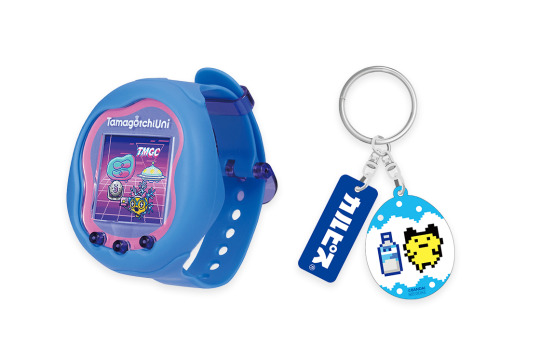
a Tamagotchi Uni and original key holder set (12 points, 50 winners),
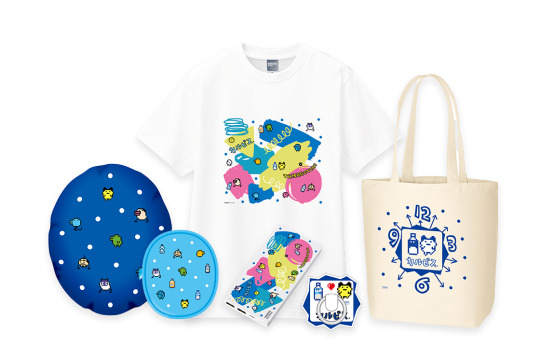
and Calpis x Tamagotchi Original goods assortment (12 points, 50 winners).
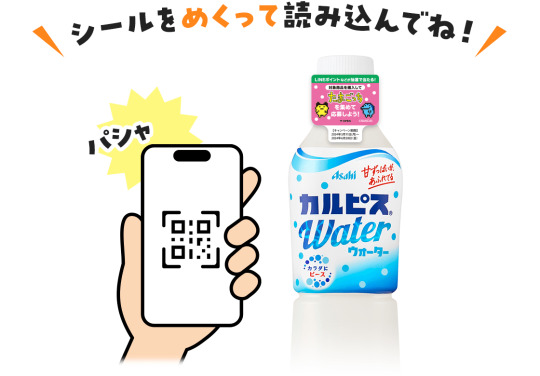
You can participate by adding Calpis as a friend on LINE, purchase Calpis products by locating the campaign sticker. Scan the campaign sticker QR code, collect points, and apply for the prizes mentioned above! Qualifying products include Calpus Water PET 500ml, Calpus Soda PET 500ml, Calpis The Rich PET 490ml, and Calpus Up Fruit Orange Mix PET 470ml.



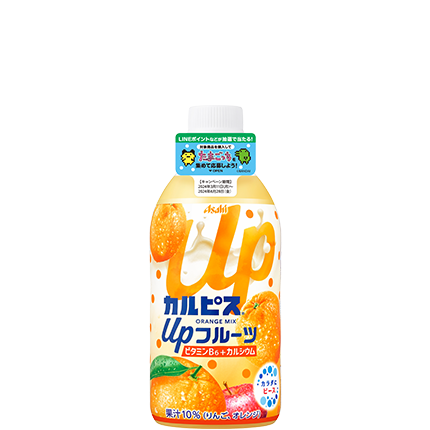
You can collect Tamagotchi characters by scanning the QR code on the camping sticker of a qualifying product. Every time that you earn points, a new Tamagotchi character comes to play.

The progression will be from baby to adult based on the number of points you earn! Baby stage is member registration, 1 point for toddler, 2 points for teenager, and 3 points for adults.
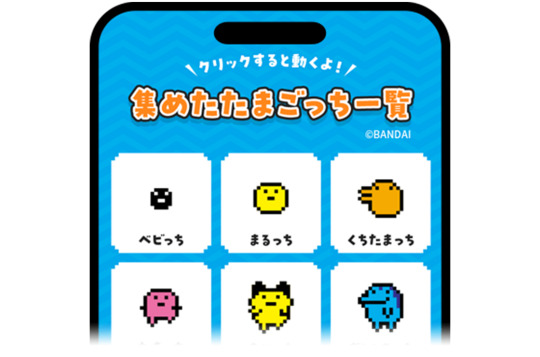
You can collect all the characters from the Tamagotchi Original but in color sprites. Depending on which Tamagotchi characters you collect, you will earn different smartphone wallpapers, and there are 7 different kinds.

Lastly, Calpis has an exclusive Tamagotchi Uni item you can download by an unlimited 16-digit download code! This item is scheduled to be released at a later date.

29 notes
·
View notes
Text
QR codes for restaurant menus actually rule if you or someone in your group has a food allergy.
printing new menus costs money and most restaurants don't want to do that unless absolutely necessary. especially considering how restaurants don't even have to change their recipes for menu items to suddenly change allergen status. restaurants at the mercy of the manufacturing practices and ingredients of their suppliers. when the menu is on a website it's way easier to maintain at a relatively low cost. it makes the menu searchable too which also rules.
#i mean best practice is to have both physical and digital menus#ive seen several restaurants do both. if you want a physical menu they bring you one#but anyway its annoying to see people whine about this so much#downloading an app is where I draw the line though. fuck your app
24 notes
·
View notes
Text
[NOTICE] SUGA | Agust D TOUR 'D-DAY' The Original Release announcement

Hello. We are excited to announce the release of SUGA | Agust D TOUR 'D-DAY' The Original.
SUGA | Agust D TOUR 'D-DAY' captivated a total of 330,000 audience in 10 cities across the world! The three last shows of SUGA | Agust D TOUR 'D-DAY' THE FINAL, and the grand finale of the world tour, were captured in 4K, bringing the exhilarating energy that filled KSPO DOME to life. Not only does it include dazzling special solo guest performances by RM, Jimin, and Jung Kook, but also their joint performances and behind-the-scenes footage of their practices, as well as tour performance practices, rehearsal sketches, and various backstage stories from the North American tour. The photo book comes in two versions, each containing behind-the-scenes shots from THE FINAL performances in Seoul and the world tour. A photo card set capturing moments from every performance, a postcard set that will let you relive memories from each city, and a transparent folding card featuring the lyrics of the song “D-Day,” also make for invaluable additions to your collection. SUGA | Agust D TOUR 'D-DAY' The Original is available for pre-order starting May 21 and will officially release on July 15.
[PRE-ORDER DATE] - From 11AM, Tuesday, May 21, 2024 (KST) *WHILE SUPPLIES LAST* [RELEASE DATE] - Weverse shop GLOBAL : June 7, 2024 (KST) - Weverse shop US : July 15, 2024 (PDT) - Weverse Shop JAPAN & UNIVERSAL MUSIC JAPAN : June 14, 2024 (KST)
- OUT BOX Size : 151x205x58mm * This outbox is designed to protect the product during distribution. We do not offer exchanges or refunds for stains or damage to the outbox that may be sustained during the distribution process. [SPEC] 1.PHOTOBOOK SET PHOTOBOOK COVER Size : 765x190mm PHOTOBOOK Size : 140x190mmㅣ2ea 1set THE FINAL ver. - 120p TOUR & BEHIND ver. - 120p 2. DIGITAL CODE - DIGITAL CODE Size: 27x85mmㅣAbout 185 mins [144p], [270p], [360p], [480p SD], [720p HD], [1080p FHD], [1440p FHD], [2160p 4K] KOREAN, ENGLISH, JAPANESE, CHINESE *This product is made of recycled plastic, so the marbling pattern is not identical on all items. Spots, parting lines, and other natural occurrences in the manufacturing process may be present and do not constitute defects. 3.PHOTOCARD SET BOX Size : 60x88mm PHOTOCARD Size : 55mmx85mmㅣ28ea 1set 4.POSTCARD + STICKER SET SLEEVE Size : 140x191mm POSTCARD Size : 140x190mmㅣ10ea 1set STICKER Size : 140x190mmㅣ1ea 5.TRANSPARENT FOLDING CARD Size: 600x150mmㅣ1ea
[CONTENTS] SUGA | Agust D TOUR 'D-DAY' The Original 해금 대취타 Agust D give it to me Trivia 轉 : Seesaw SDL 사람+사람 Pt.2 (feat. 아이유) 저 달 Burn It (feat. MAX) (with JungKook) Seven (feat. Latto) Tony Montana (with Jimin) Like Crazy 이상하지 않은가 (feat. RM) Come back to me Interlude : Shadow BTS Cypher PT.3 : KILLER (Feat. Supreme Boi)+BTS Cypher 4 욱 (UGH!)+땡+HUH?! (feat. j-hope) Life Goes On Snooze (feat. Ryuichi Sakamoto, 김우성 of The Rose) 어땠을까 (feat. 김종완 of NELL) AMYGDALA D-Day INTRO : Never Mind 마지막 (The Last) How to watch <SUGA | Agust D TOUR 'D-DAY' The Original> Watch the video(VOD) by using the digital code card enclosed with the merchandise. Digital codes are services that allow you to watch high definition VODs on Weverse. Register/verify the code on the card to watch the VOD. [How To Use The Digital Code] - MOBILE * QR code: Use the smartphone camera to scan the QR code and visit m.weverse.io/code/dc. Redeem the digital code and enjoy the video on Weverse app. * Digital code: Visit weverse.io/code/dc, and enter the digital code near the bottom. Enjoy the video on Weverse app. - PC * Visit GLOBAL > MORE > [ENTER DIGITAL CODE] menu on the Weverse website. Enter the digital code near the bottom and enjoy the video. * Visit weverse.io/code/dc, and enter the digital code near the bottom. Enjoy the video on the Weverse website. - TV APP * Visit weverse.io/code/dc or the Weverse website and enter the digital code. Enjoy the video on the Weverse TV app. ※You need a Weverse Account to watch the content. ※One digital code can be registered per one Weverse Account. The code cannot be registered in another account when it is already registered in one account. ※Please note that once you delete your Weverse Shop/Weverse account, your purchase history cannot be restored.
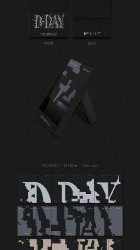
#ultkpopnetwork#mgroupsedit#idolsincedits#maleidolsedit#yoongi#suga#min yoongi#bangtan#bts#dday:theoriginal.dvd#holy fuckin shit dude
16 notes
·
View notes
Text
THE DEVIL DOLL.

Pairing: Hinata Shoyou & Reader
WC: 1.7k Triggers: Lobotomy / Platonic Yandere (?) Summary: You find a doll in the trash that you plan to sell. Horror!AU.

He was meant to be a life-sized doll, but he seems small to you. His hair is a messy red, almost orange, standing up in all directions. As you remove him from the dumpster where you found him, you run your fingers through it. It’s a fine material, almost like real hair. He has a layer of some kind of artificial skin over what feels to be a more solid, heavy plastic frame. You wonder briefly why such an expensive looking doll- you’ve seen them in the stores, they’re the next big thing for people with enough money to use dollar bills as kindling for their fireplaces- why is such a thing in the garbage?
You give him a cursory check. He seems to be all in one piece, just dirty and scuffed from his time in the dumpster. There are a few cosmetic damages where smooth skin-you can’t think of anything else to call the material- has been torn or nibbled by pests and the sharp edges of other trash, but you have done repairs like this before. If you heat up the material, you’re fairly sure you can melt the edges together. There may be little ‘scars,’ but if you can get the guy up and running again, you’ll be able to sell him for enough money to get yourself back on track.
You get him home. To clean him off, you end up having to give him a strange sort of sponge bath in the tub. It’s the only place he’ll fit. You’re afraid to get him too wet, though. The dolls are supposed to have a sort of rudimentary AI system, and you doubt throwing him into a vat of rice will save him if he ends up getting water-logged.
Once he’s been cleaned, you place him on the floor in your room and gather your tools. For a lot of fashion type dolls, you can use a hair dryer to heat up the glue enough to remove the doll’s head. This one seems to not have a detachable head in the traditional sense; the neck and head connect together almost seamlessly. From the owner’s manual you downloaded by scanning the QR code on the heel of his foot, you are able to find the power switch, which is an almost imperceptible raised button just behind his left ear.
You press the button and hold it down until you hear the slightly rattling hum, like that of an old computer toward. Sitting back on your heels in front of him, you watch as his head lifts and his eyes slowly open, glowing a faint amber. He cocks his head to one side, regarding you curiously, and offers a smile. When he opens his mouth, a little air brushes your face, and you realize this must be where one of his venting systems is located. The manufacturers really thought of everything to make these dolls seem lifelike.
“Hello, my name is Hinata Shoyo.” He says, a little stutter and warble to his flat voice. It reminds you a little of the voice of one of those text readers people use to make videos on apps like TikTok. You are a little confused by the doll already having a name; the manual made it sound as if the first thing you would do when the doll was booted up for the first time was to give it a name. You suppose this doll already has a name because someone tried it out. Maybe it was a display model. Certainly someone hadn’t spent all that money just to throw it away after naming it.
You briefly scan the manual again and find a page concerning how to reset the doll. The doll’s wide, golden eyes follow your hand as you lift it toward his right ear, searching for the small button just inside the soft whorl. You find it, press it, and hold it down. The doll watches you closely, blinks, and repeats.
“Hello, my name is Hinata Shoyo.”
Strange, but you’ll worry about that later. Besides, even if he has already been programmed with a name, you still believe you can sell him for enough money to change your current circumstances. You smile at him and tell him your name. A thin band of light glows around the edge of his amber iris as he takes in your name and repeats it in that same, flat voice as before. You have a brief moment of panic, before reading in the manual that there can be multiple users with various profiles and preferences. You’ll just delete your profile once you do the necessary repairs and get him in working order again.
As you move about your room, gathering your tools, the doll Hinata watches you. It sits with its legs crossed and its hands resting in its lap. You’ll need to buy the doll new clothes-. The ones that it is wearing now, while freshly cleaned courtesy of your washer and dryer, are falling apart from being exposed to the trash and elements. You aren’t sure what base personality this model of the doll is supposed to have, that would have been something included with the specific box and literature of this particular doll, but you suppose you can ask it. If the doll’s AI is not sophisticated enough to answer basic questions about itself, you can look it up online and shake your head about the price of the doll compared with its actual capabilities. “What model are you?” Hinata straightens as if called to attention and rattles off a long string of letters and numbers. You shake your head quickly, there’s no way you’ll remember all of that. “No, I mean… what is your interest? Or hobby?” You’re scrolling madly through the owner’s manual, trying to find the right verbiage to get your desired response. “I like volleyball.” Hinata says with a bright smile. The expression on its face is almost human in its excitement- almost.
A sports model. You can hardly contain your own excitement. The ones that help with learning and practicing sports are the more expensive models, since they include sensors for heart rate levels, step counting, and other health and wellness based applications. Why was Hinata in the dumpster? The question keeps nagging at the back of your mind like an itch you can’t quite scratch, but you’re too excited and too deep in mentally creating the list of the bills you’ll pay and things you’ll treat yourself with when you sell the doll. “Hinata, can you run a vitals scan for me, please?” You ask, just as a test. The doll stands and moves to you. It reaches out its hands; one circles the bicep of your left arm and the other your right wrist. The hand clutching your left arm begins to tighten its grip, the tips of the doll’s fingers applying enough pressure to be uncomfortable, almost painful. You gasp and try to pull away, but Hinata holds firm. It’s only a few moments, but they are frightening ones. He releases you, and you stagger back. “Your blood pressure is slightly elevated, but vitals seem to be strong.” Hinata says matter-of-factly. He tilts his head and smiles. “Do you want to go for a run? Do some drills?” Of course. That’s why his grip was so tight; he was checking blood pressure. You take a moment to calm your breathing. Shaking your head, you offer him a small, nervous smile. “That’s okay. Tell me all about yourself while I start working on your repairs.” Hinata’s expression changes into something that looks very intense. Were his pupils always slitted like a cat? “I’m not broken.” His voice sounds strange. It's stuttering again, glitching.
“No, of course not! You just have a few cuts and you need new clothes.” You say quickly, gesturing to the tears in his skin and his obviously ruined clothes. Hinata looks down at himself and seems to notice his clothes for the first time. His eyes go back to normal, and you’re not sure if they had even changed before or if that was just a trick of the light. He sits down on the edge of your bed and the smile is back. The repairs don’t take long. Once you gather the necessary tools and materials and lots of coffee and energy drinks, you are able to finish over the course of a weekend. You managed to order a volleyball jersey off the internet and get it rush delivered. It fits him a little loosely, but it’ll be good enough. Whoever buys him can get him better clothes. The uniform is a black and orange polo sort of shirt and shorts. (Orange to match the bright color of his hair.) You take photos of him, making sure to take photos of the small areas where you repaired him, and upload them along with his description. You start the price on the lower end for his model, hoping that the bidding will get higher as the time passes. When you’re finished, you take a moment to let yourself feel excited and hopeful. You go to sleep with a smile on your face. There is still that nagging voice in the back of your mind. Why was he thrown away? You don’t notice his eyes glowing from the corner of your room. You wake up to a loud sound and find Hinata standing over your destroyed computer. Your eyes widen, but before you can draw the breath needed to scream, he is on top of you. He’s so fast, a blur of motion. He sits heavily on your stomach, and you can see a jagged piece of glass in his hand, most likely from the screen of your computer. He is staring at you with those wide, golden eyes and those slitted pupils you thought were just your imagination.
“You were going to sell me…” Somehow, his modulated voice sounds sad. You try to speak, but his free hand lashes out and catches your throat. His hand begins to squeeze, and suddenly you can’t breathe. “I thought we were friends.” You thrash beneath him, clawing at his hand, but he doesn’t budge. Darkness is starting to crowd your vision; your head is beginning to swim. He lowers the tip of the glass toward your eye. “I think we can still be friends, don’t you? I’ll make sure you’re unconscious while I make your repairs.” He’s smiling broadly, his eyes are so wide they look like twin, glowing suns. As you black out, you feel the tip of the glass shard pressing between your eye and its socket, digging deeper and deeper. “Friends forever.”
#hinata shoyo x y/n#hinata shoyo x reader#yandere hinata#yandere haikyuu#hinata shoyo imagine#written by iwachan
136 notes
·
View notes
Text
Bit.ly is making me uneasy. One of these days their site will go down, and so much stuff will break. Even if it's only for an hour. It's just too ubiquitous.
For example, I bought some model railroad accessories (DCC decoders specifically) recently. They come without a manual, which is good because I have too many manuals of that type already. Instead they come with a sheet that contains a bit.ly URL and a QR code. And if I try to open that—I can't. Apparently the manufacturer's bit.ly account got suspended. And that's just such an unforced error. Just have a normal URL there, and have a QR code that leads to the manufacturer's website, which works perfectly fine.
Actually this decoder is a special cheaper version for that dealer, you have to visit the dealer's website to download the manual. My guess is also that it's the dealer's bit.ly account that got suspended. But this isn't really relevant unless you need the manual for the PD10MU-3 DCC decoder, and you probably don't. Just remember, red and black go to the track, orange and grey the other way. There's nothing surprising about this decoder, it's just cheaper and lacks a few of the nonsense features you probably don't need anyway.
Somehow we managed to find a gatekeeper and single point of failure for the concept of internet URLs. That's just grim.
You may ask, why should we distrust bit.ly? I'd say, why did we ever put ourselves into a position where we needed to trust them in the first place? But philosophy aside, there are good reasons to distrust them, such as that they apparently keep banning German model railroad stores, or just that they're an internet company that keeps giving away their main product for free and that can't go well forever. Or that any complex system will have issues sooner or later, either technical, organisational or financial. Or that a key part of their product, the ".ly", refers to Libya, a country that has been in an on-and-off-again civil war since 2011, and if control over the top level domain ever changes hands or becomes uncertain, that's going to cause a lot of fun for everyone.
If you can, don't use bit.ly, just use the full url, including in QR codes. Let's all try to do our part to keep the internet resilient.
8 notes
·
View notes
Text
Why Need Build Customer Loyalty? A Comprehensive Guide
VCQRU is a leading anti-counterfeiting solutions company in India, offering one-stop solutions for anti-counterfeiting, custom QR code, smart packaging, labels stickers, and e-warranty solutions with dynamic QR code.
Read more:
#dynamic qr code#qr code manufacturer#brand protection#anti-counterfeit solutions#customer loyalty programs#qr code provider#qr code provider in india#customized solution#label provider in india#anti-counterfeit solution company#anti-counterfeit technologies#anti-counterfeiting solutions in india#industrial tags manufacturer#e-warranty#data analysis#cash transfer#customer loyalty service#track & trace services#raffle#run survey#build loyalty#digital marketing#software development#digital marketing services#qr code maker#qr code generator#qr code generator with logo#qr code generator online#custom qr code generator#custom packaging for small business
0 notes
Text

Building Block Figs - Beautiful Fight Scene in the Middle of the Lake (Part One)
Figthusiast friends, it's time for a little something different! Today we have the first of a series of building block Word of Honor fig sets.
I first saw these sets earlier this year when I was browsing for figs on Xianyu, my favorite secondary market app. I stopped my scrolling in total surprise when I first saw a picture, and was like wait...are these actually Lego-type Word of Honor figs??? I zoomed in, and lo and behold, they sure were.

I absolutely loved Legos when I was a kid. My family didn't have enough money to be able to buy much in the way of expensive toys, but I did save up my babysitting money so I could buy a few of them myself. It took a long time at $1.50 an hour!
So, of course when I saw these, the nostalgia factor combined with my fandom fig obsession made these a must buy.
Today's fig is that the first set I found. It's called (via MTL) "Beautiful Fight Scene in the Middle of the Lake", which I must congratulate for being extremely descriptive and 100% accurate.
As soon as I saw this, I did an immediate search on Taobao and Weidian to see if I could just buy the set vs. pick it up off Xianyu. For two reasons. One, I can buy directly off Taobao (vs using a third party purchase agent for Xianyu), and two, I was hoping there was more in the series than this one figure. However, they were no longer being sold on either platform, so Xianyu it was.
I browsed around and was lucky enough to find a seller on Xianyu that did, in fact, have other sets in the series, and who was clearing them all out, brand new and unopened. She noted that she was still a fan, she just had never had the time to put these together and realized now with her workload she probably never would. I bought all three of her sets, including this one, for about $37 total, which is about half off the retail of 179 yuan per set they originally went for (about $25 each). I thought this was a great deal considering the actual costs of specialized Lego sets these days, even non-branded building block sets.
As far as I can tell, there are four big sets that are famous scenes from the show, and three small sets that are just our two favorite leads only. I was able to buy the three big scenes off that one person, and one of the set of figs-only, but I'm still missing some (too many!). I keep checking Xianyu. I was actually surprised to see the other day there was another set I didn't know existed - but sadly it ended up being sold out. I'll keep looking.
Anyway!
The Beautiful Fight Scene in the Middle of the Lake is a 1,236 piece set, measures 8.4 x 16.8 x 12.4 cm, and it's rated about 8 hours to complete. It's the fastest of the big sets (the remainder of which are rated 10, 10, and 11 hours respectively). In retrospect, should I have started with the smaller figs-only set (rated 2 hours)? Probably. But I was just so charmed by this set, and I only have one lake fig set to date, so this seemed like something very fun. Plus, as you will hear about later, I did not fully understand the specs until well after I was almost done assembling the very last set.
I had a surgical procedure that was scheduled this month (and is why I've been out of commission for a while), and I had specially saved up these sets as fun projects to make while I was recovering. I figured it would be nice to have something to look forward to.
So, post surgery, once I felt up to sitting up, I made myself a comfy little nest and settled in with my little boxes of treasures.

This is the pic from the seller - you would never know these were Word of Honor sets. They're just generic boxes from the manufacturer, with a small sticker on the top to indicate what set it is, along with a QR code.
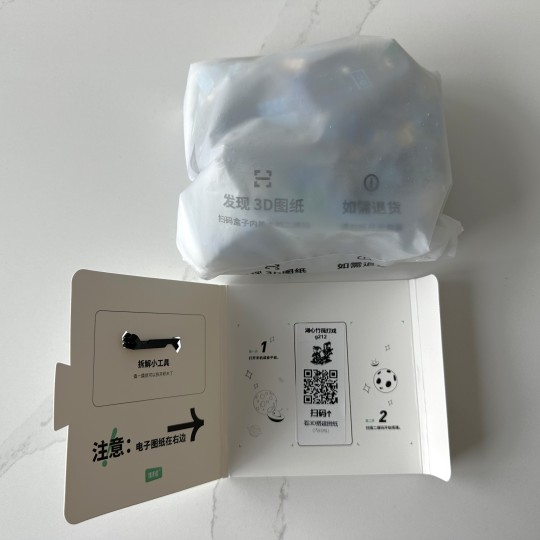
I excitedly opened up the box, to find a bag o'bricks, a small black plastic piece and another sticker with QR code.
It turns out the little black plastic piece is a super handy little tool to quickly and easily break assembled bricks apart. Which is great if you accidentally assemble any steps incorrectly, as I would soon find out.
The QR code was for the directions, which were, in a quantum technological leap forward from my admittedly decades ago Lego experiences, online and fully 3-dimensional.

Pretty cute! I decided to go in order, and indeed start with the simple looking raft.
As a side note, I will tell you that I started this completely sure I was going to be able to assemble this set in an afternoon. I had somehow completely missed the MTL for the estimated assembly time until literally just now, as I was translating pics for this blog post. The set seemed fairly small in the picture, and while it has indeed been decades since I put together a Lego set, I'm (literally) an old hand at it. I felt extremely confident. Overconfident, you might say, given that my exact mental words to myself as I clicked on the raft image was, I'm gonna knock this thing out in no time.
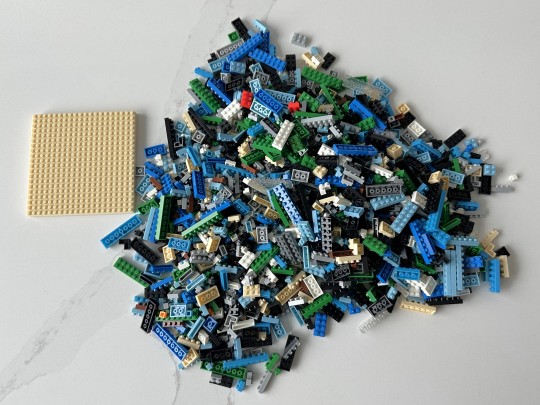
Doesn't look like much, does it?
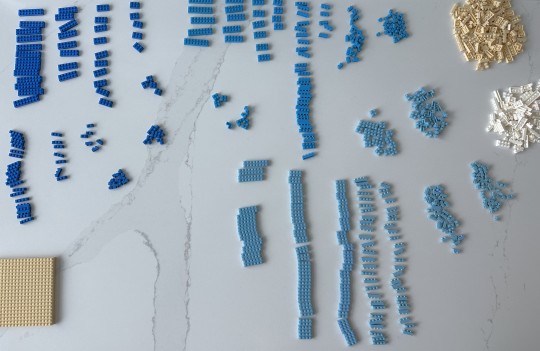
I figured that before I did anything else, I would sort by colors and shapes, so when I was ready to get started, I could move really fast. So I sorted. And sorted. And sorted some more. The bag doesn't look like a lot of bricks, but let me tell you, there were a LOT (1,236, which once again, I only realized until I was researching for this very blog post). Unlike Legos, these were all thin single-brick height, so there were no 4x4x4 type bricks, for example. It made it easier to sort, but as I was sorting (and sorting some more), I realized that it might take a lot of building to get significant height going.
Eventually, after about an hour, I got them all sorted, and felt very accomplished, if a bit tired. I took a little nap, and then settled back into my crafting nest, and then got ready to, and I quote myself once again, bang this sucker out.

The directions started with an image of the final product, which was helpful.

I will say the online direction interface was pretty amazing. I could zoom in, spin around, go upside down, view it any which way I wanted to by pinching and pulling at my phone's screen. It was fantastic, and certainly made it much easier. That little circle on the right side is the "next direction" button, and helpfully the number in the circle tells you how many steps you have left. There were 34 steps in this raft, and you can tell by the number here I'm not too far along.

Here's a little further as I gamely plug along. I got momentarily confused early on by the colors - there's a dark blue, a medium blue, and a light blue, and I had started assembling the raft with medium blue instead of dark blue. I got to figure out how useful that brick de-assembler was real fast, let me tell you. I also started screenshotting and translating the colors until I felt I had a good handle on what exact colors I should be picking.

You can see here how I can zoom in to figure out exactly where to place the bricks. You can't tell by the screenshot, but the bricks you are laying in each particular step blink, and are outlined in dark black like you see in the shot above. It's very handy.
I got into a groove pretty quick. For each step, I'd count and select the bricks shown in the little legend at the bottom, and put them in a little pile next to me. I did this to make sure I used up all the bricks each layer, as early on I was just following the directions and not realizing that some steps you had to put the brick underneath other ones, which would not be visible on the blinking screen unless I pinched and pulled the model to flip it around on the screen. If I got to the end of the step and still had bricks left, I knew one (or more) were hiding, and I could rotate the image around until I found where they should go. Yes, I did learn this the hard way, naturally.
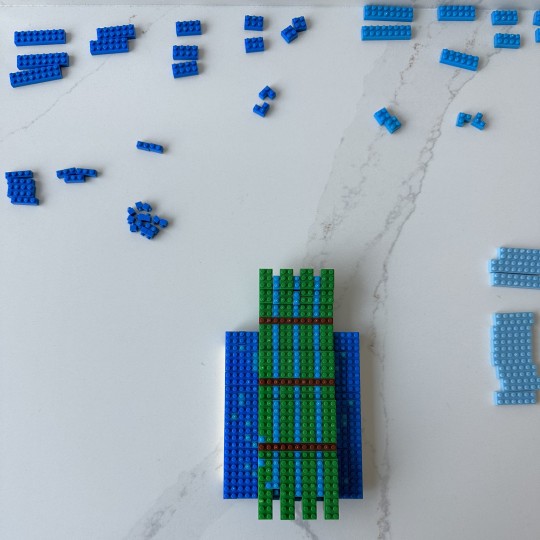
After a good long time, I finally finished the raft! I will say, I was a bit puzzled that the raft is green and blue, as we well know the raft in the show is just bamboo.
Did I re-watch the scene just to make triple sure? I sure did!

So there's actually two rafts, this simple one here in the foreground, and then the bigger, sturdier raft there behind the boat. It's this first raft that this set is capturing, and more or less this moment, if not at such an acute angle.

I may actually rearrange the figures to be in this particular configuration later. Stay tuned!
It turns out that the raft is these colors because (now that I've put a lot of them together) the company doesn't appear to make many brick colors. The blues are unusual in the sense there are actually three different shades. The red bricks I have have only ever been one fire engine red color, and the brown bricks only one medium brown. So, rather than make the raft uniformly all brown, they made it colorful with the blue and green, perhaps to simulate the water. I admire the colorful nature of it, but I have to say, I'm contemplating re-doing the raft when I finish all the kits. Each kit has leftover bricks, and I seem to have a lot of brown bricks left over. I think I'm going to try remaking this with a brown raft base and black for the lines instead, with some blue and more of the transparent bricks to simulate water. Stay tuned for that, too!
So, by the time I finished the raft, I was beat. Super tired, and surprised it took as long as it did. BUT, I reasoned it only made sense since it was the very first piece I did, so naturally it would take longer than most. It was time to sleep.
The next day, I woke up bright and early, on a mission. On to Wen Kexing!

I started confident (confidence is never my problem, unfortunately, but it is sometimes A problem) that now that I had experience, I could in fact, bust this bad boy out.

I was merrily assembling away, and I happened to take a closer look at the directions - specifically, the little number in the bottom circle.

I don't know if you can see this number, but it is two of Gong Jun's favorite number 88. That's right, EIGHTY-EIGHT. I was like, what?!? How many was there in this figure? I've been going for a while (answer, as I scrolled back through the directions, is 111).
Remember how I said that these are all single-ply building bricks? Yep. Takes a bunch to turn them into a tall, yet humble philanthropist. Well, the only way out is through, right?
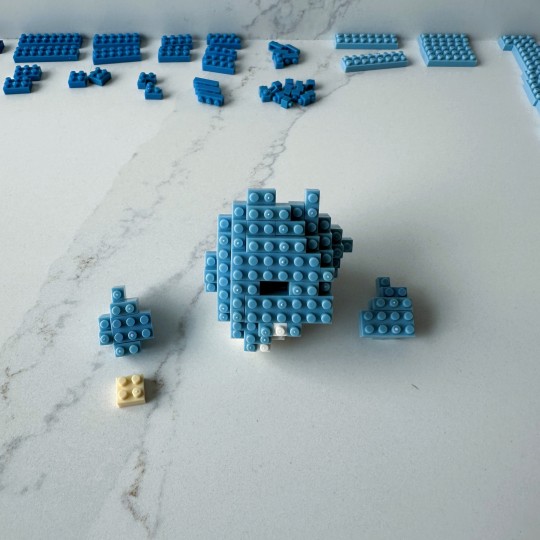
The directions kept having me assembling parts, and then having me set them aside for later. It looked nothing like a mild and gentle scholar, but I've found that, similar to life and perhaps also Ikea assembly instructions, sometimes you just have forge ahead and take it on faith that things are gonna work out.

Ah ha! Suddenly it IS starting to make a little sense. I recognize that costume!
(Sidebar to say, we all recognize this costume! And we know this gorgeous pale green outer robe is not, in fact, blue. I was slightly taken aback by this until I realized later the thing about the factory's lack of colors. The bright, intense grass green of the only green option (other than neon green, ahahaha) would have been even less suitable for our peacock's fine feathers, so actually this is a very good choice).
MAY I also note that number in the bottom right hand circle is 55. FIFTY-FIVE.
I'm gonna fast forward through the naps and the breaks, and just take one quick other picture break:

I just about cheered when I got to this point! I was like, oh there he is! You can also tell by the quality of light and the shadows that it was late at night at this point. On a different day.
Anyway, we arrive at the glorious conclusion:

Hooray! I was so happy and tickled at this point. I was just so charmed by him. His little rosy cheeks, his side wispies on his hair, the motion of him standing on one foot. The back of his hair is fantastic too, although you can't see it here yet.
On to our beloved A-Xu...

May I just say how DELIGHTED I am that this is indeed hobo-Xu? His little beard and goatee combo in brick form just made me giggle.
First thing, I checked to see how many steps our reclusive hobo had. 115, which I appreciated for Zhang Zhehan's birthday kadian, if nothing else.
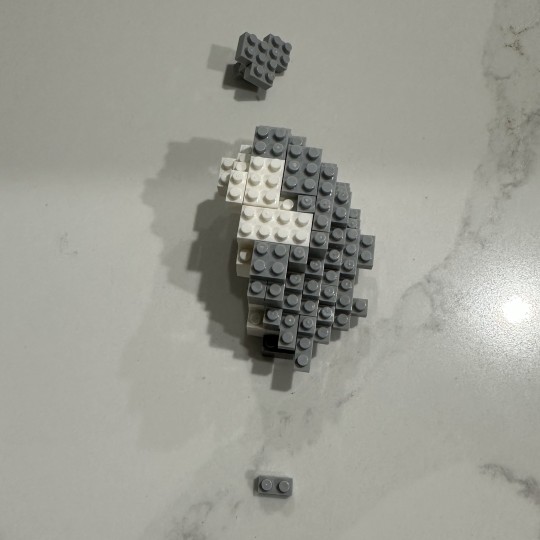
You can tell by the colors and shadows that once again this is a different evening, here on step 77 and about to graduate to step 76:

Once again it looked pretty unrecognizable, except that now I had done one fig, I was starting to understand kind of where they were going.

Plus, Lao Wen got to watch this time. In the daytime, as you can tell by the nice bright light.

Annnd it's night time again. Ahahahaha, I love this fig! I really like how they did his bangs. You can see here too some of his glorious black hair streaming out behind him.
By the way, at this point the tips of my fingers were quite sore in a stingy kind of oversensitive way. Sadly, typing away at a keyboard all the time (also for decades!) at my desk job has in no way toughened up my fingers. I did not think snapping bricks into place and pushing down on them to squeeze them tightly together would tax them so much. Sitting here typing this, actually, my fingers are still sore (I am admittedly working my way though the last set, the 11 hour one).
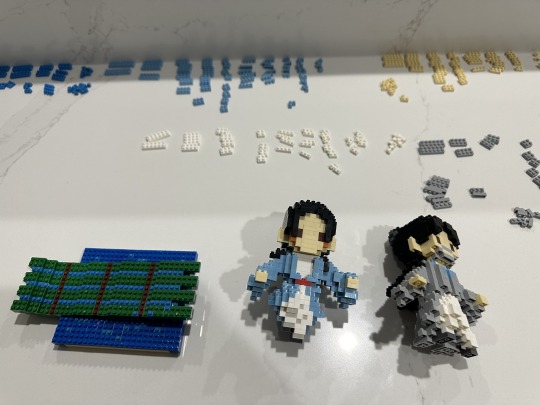
It's yet another (different) evening, and at last, A-Xu is here! I was so happy to get to this point!
Annnnd I'm out of picture slots to do the full beauty 360 degree spin of these two. Sorry to make you wait (although you may be tired of such a massive post already!), but come back tomorrow for Part Two!
Material: Plastic building bricks
Fig Count: 500 (I'm gonna wait to count these until tomorrow)
Scene Count: 32 (same)
Rating: Lots of fun, actually. I'll give the in-depth low-down tomorrow!
[link to the Master Post Index]
11 notes
·
View notes
Text
Intricacies of Holography
Holography is a technique used for recording and reproduction of three-dimensional (3D) images using light wave interference patterns. The process involves the use of a laser beam that is split into two separate beams. One of which has beams is shone directly onto a photosensitive material, while the other beam is reflected off an object and then shone onto the very same photosensitive material. The two beams interfere with each other, creating a complex pattern of light and dark lines on the photosensitive material. This pattern is known as a hologram. As a leading Hologram Sticker Manufacturer, we realize the importance of creating high-quality hologram stickers that meet the needs of our customers. In this article, we will take a closer look at the science behind hologram sticker manufacturing and printing.
#Hologram Sticker manufacturer#Hologram Sticker supplier#QR code hologram Stickers#Hologram sticker provider#Hologram label
0 notes
Text
Introducing Zetexa eSIM: Your Gateway to Global Connectivity
In this era of fast-tracked globalization, a lifestyle laden with traveling back and forth in a routine was once considered a luxury. As digital technology has evolved over the years, the way we communicate and stay connected in our daily lives across the globe has completely transformed. Say it quietly, though: a major turn of the wheel in this regard has been toward the introduction of eSIM technology. Exemplifying this is Zetexa, a company leading the way in innovation for mobile connectivity. Zetexa eSIM is not just another digital SIM solution; it's a revolution in what we watermark for mobile connectivity. It offers an easy, sustainable, user-friendly solution for global travelers with a ready activation process that takes only five minutes, top security, and flexible payment.

An eSIM is an embedded SIM integrated into your gadgets—meaning, no need for an actual hard SIM. This is a mobile plan technology that allows you to download and activate a plan directly on your gadget just by scanning a simple QR code. Quite flexible, convenient, and reliable: Zetaxa eSIM—whether you are a frequent traveler, a student studying abroad, or a business professional on the go.
Traditional use of SIM cards makes a customer be tied to one place, and this tethering is made even more inconvenient by the fact that a new physical card would need to be inserted into their device if they were to go to another place. It is here that the eSIM offered by Zetexa solves it simply as one global solution that can be turned on and utilized in over 180+ countries. This is just an ideal solution for people valuing connectivity round-o-clock without the headache of gelling up various SIMs or facing compatibility issues with the device.
Total Global Coverage and Reach
Among many other features, the Zetexa eSIM boasts extensive global coverage. In partnership with the best services and telecom companies across the globe, Zetexa eSIM ensures its users receive high-end network coverage in more than 180+ countries across the world. You can travel across continents without having to worry about losing connection or paying expensive roaming charges.
This kind of universal appeal greatly benefits international tourists, who often run the risk of obtaining dubious mobile networks in foreign nations. So imagine not having to bother with drab local SIM cards or being at the mercy of spotty Wi-Fi hotspots but having that seamless connection with Zetexa eSIM, helping users to easily navigate through new destinations, keep in touch with friends and family, and even with work commitments hassle-free while on the go.
What is more, it also offers a range of plans that fit not any but "one's needs." One of them might need higher data limits to work and to stream by, and for someone, it might mean just enough to be able to chat and be on social media. If this is the case, one can be sure that there is a Zetexa plan for that. Their prices are just competitive enough to make users appreciate the top-graded connectivity and get value for their money.
Sustainability and Environmental Impact
On top of the sustainability of most products, Zetexa is a company that very consciously does business in an environment virtually swept with environmental problems. The traditional SIM card model adds to waste, with billions of plastic SIM cards manufactured and thrown away each year. Zetexa eSIM eliminates this waste by doing away with the need for a physical card altogether.
By using the Zetexa eSIM, users make a step in the direction of depleting their environmental footprint. This is much in line with the global trend that is in force right now, in which consumers are more likely to put their support behind companies that bank on sustainable practices. This move by Zetexa to reduce plastic waste is indeed a great leap in the telecommunications sector; it sets a precedent for other companies to follow this model.
Additionally, the movement of physical SIMs through a complex supply chain for their production and distribution adds to carbon emissions. Here, digitization of the whole process, in addition to mere savings in plastic waste, results in lessening the carbon footprint and environmental loads that come with product manufacture and shipping.

Never Expiring eSIMs: Uninterrupted Connectivity
Zetexa eSIMs have one feature: they don't expire. They may have an expiry date, unlike ordinary SIM cards or even some eSIM offers that expire or have a restriction in terms of validity, but a Zetexa eSIM doesn't expire. This will appeal especially to the value-neutral traveler or remote worker who doesn't need to use the SIM card continuously but wants the peace of mind that comes with knowing an option for connectivity will be present should a need arise at any point in time.
This lifetime feature with Zetexa ensures that when you get one eSIM, you will have it forever; it will just be waiting to activate a plan whenever you travel. There is no need to worry about losing your number or having to re-register after a period of inactivity. This kind of flexibility is seen in no other solution, making sure users stay absolutely stress-free with connectivity. Instant Activation and User-Friendly Interface
The eSIM by Zetexa is designed to be activated simply and intuitively to be user-friendly. Immediately after purchasing the Zetexa eSIM, activation involves scanning a QR code from any device one intends to use the eSIM with. On-the-spot activation for services such as these comes as a great relief, especially to travelers who touch down in new countries.
Within just a few minutes, one is able to purchase and activate the connection; there is no headache related to the need for technicality in the process or cumbersome instructions. The Zetexa app can be downloaded from the Zetexa website and is available in both iOS and Android. The process can be followed by anyone with little or no technology exposure. This is a great plus point, as ease of use makes it easier for anybody to become connected. Dedicated Customer Support
Customer support is one of Zetexa's top-notch services. Realizing that users can find difficulties or have questions, Zetexa offers constant 24-hour support for any problem or issue. Be it a connectivity issue or an activation process, Zetexa's support team is on hand to make the experience smooth.
This kind of attention to the customer is very helpful, especially for travelers who could feel at a loss with unknown destinations and have a significantly convenient way of asking for help, only a call or a message away. With the added layer of security on top of everything else, Zetexa eSIM is a truly trusted way to connect worldwide.
Corporate Alliances and Partnerships
The company is able to advance and grow through strong relationships developed within its telecom providers and corporate alliances. By teaming up with global telecom companies, Zetexa enables itself to offer a high-quality network infrastructure; such coverage does not stutter across different regions of the world. This is aimed at allowing the users to experience the high-speed, non-stop connectivity that the Zetexa brand promises.
Other than telecom partnerships, Zetexa was in partnership with other corporations to ensure the provision of the required business needs of customized eSIM solutions. A company with a workforce always on the go will have solutions from Zetexa, under which assurance is a sure bet that their staff and more stay connected from anywhere around the world. These corporate partnerships further allow Zetexa to offer its services with bulk plans and other incentives, hence being a go-to when seeking to make the communication plan within one's business much simpler.
Ongoing Innovation and Personalization
Zetexa is quite a place that consistently deals with innovation and includes updates to services with customers' feedback and advancement in technologies. This customer-centric approach is what puts Zetexa eSIM on the very frontiers of mobile connectivity, with features that are constantly changing to serve user needs.
This is done through the process known as personalization. Noting the diversity of human needs, Zetexa offers tailor-made solutions that meet individual requirements. Whichever data plan is specifically needed, whichever network, and or whatever individual connectivity needs exist, Zetexa will work to ensure a fit is provided.
This tendency towards individualization extends to the user experience as well. Zetexa's app interface is designed rather friendly so users can get their hands down interacting with the eSIM, looking at data consumption, and adjusting plans in accordance with their own needs. It is in this line that this control and customization has given Zetexa the edge over other eSIM providers and established it as the first preference of the appreciative user.
Conclusion
While living in a world where connectivity is very important, Zetexa's eSIM solution is a revolution itself, connecting convenience, sustainability, and global reach. With never-expiring eSIMs, instant activation, and dedicated customer support, Zetexa ensures its subscribers are always connected with the rest of the world. Perfect for frequent travelers, students taking international degrees, or business professionals based on the go, Zetexa eSIM services realize headache-free, uncomplicated communication, keeping you in touch and productive.
In this world of moving sharply towards digital solutions, Zetexa is leading in mobile connectivity solutions that offer innovative and environmental-friendly products. When you choose Zetexa eSIM, it's more than just convenience; it's a choice toward the future.
Visit the Zetexa website to check out their eSIM solutions for a hassle-free global connectivity journey.
3 notes
·
View notes
Text
Board Game Rec: Daybreak

I found Daybreak via Simon Clark, and it really does deliver. You can tell the people designing it understood the science, but it's not overly complicated. It's extremely well designed to teach, very tactile and visually appealing, with lots of cards and other design features to remind you how things work.
youtube
Gameplay wise, it's basically cooperative solitaire. You each have 5 active policies, which are on top of other policy stacks which power them. You can place new policy cards in front or behind. There are also collective policies and crises with similar rules. All gameplay revolves around the effects of these policies and crises, so the core rules are very simple, while the gameplay itself has lots of depth.

It's very realistic, and produced a lot of darkly humorous moments among us. The first time we played I was the US and I got a policy that allowed me to shut down my coal power. I got excited and did it without thinking, then realized later I no longer produced enough electricity to support my population. Rolling blackouts sent community after community into turmoil, completely destabilizing the country. While everyone else was doing great I was collapsing. Eventually environmental disasters drove me into collapse.
I narrated how American refugees flooded the rest of the world and supported Fascist movements that destroyed the world. The whole time we played I kept making jokes about how I caved to dogmatic degrowthers, and that's why the world collapsed.

The global crises are also very real. Fosil fuel lobbying hamstrings your efforts, drought and forest fires destroy your resources, and eco-fascist movements threaten your political stability. The game itself is made out of 100% biodegradable, low water-consumption materials. The thematic cohesion goes to the level of manufacturing.

The visual design is odd in a sometimes funny way. It's one of those products that feels like it came straight from design school following textbook principles. Everything is clean, clear, simple, and colorful. The visual appeal is nice, but a bit weird in the context of rapid climate collapse. (I guess if you win, it fits.) The "communities in crisis" pieces in particular are weird, because they're the stereotypical multicultural kumbaya icons, but they represent social collapse--literally the opposite of everyone living in harmony.

The cool thing is that every card is linked via a QR code to a page on their site where they explain the science, economics, and sociology of the idea behind the card. The whole thing is a giant educational tool. They really did integrate every avenue of design into one coherent whole. And it's actually fun to play!
#board games#game design#design#art#climate change#nature#ecology#economics#politics#sociology#political science#education#Youtube#Simon Clark
2 notes
·
View notes
Text
as requested by one of my followers, i come with some body-and-mind-based sundowner headcanons! (again, i am not an expert at this, as i haven't reached the sundowner fight yet or an expert in whatever i discuss! i might be completely wrong in some cases!)
1. sundowner was definitely in new york during 9/11. wild start, right? well, think about it. he's been in the iraq war and afghanistan when he was still in the military, obviously due to america's war against terrorism. hell, he's a die-hard war fan! (sundowner quote to back this up: "business ain't been the same since they shut down SOP. "a clean break from the war economy." well some of us liked that economy. how's an honest warmonger supposed to make a living?") he's all about war since he claims through words and actions that war is the only thing that pleases him anymore, and this terrorist attack pushed him even further to his obsession with full-out war. if he wasn't there when the twin towers fell, he has at least watched it on the news and got all excited about it.

2. sundowner has always been bald (or on the verge of it. always. of course he's bald with a codename like sundowner. he's destined to have instant hair loss. even in his childhood and before he was a cyborg, he's either had a buzzcut or eternally bald from when he was just a baby. besides getting his name from the blood on his blades looking like a sunset, he only names himself sundowner just because he wants the sun to not shine on his bald head!
2.5. irrelevant headcanon that i made just because i want to make fun of sundowner: despite being bald all the time, he does have peach fuzz. he's no hair but all fuzzy. no top, all bottom! i'm getting off topic now.

3. sundowner is heavily based off of a shogun, or samurai leader. obvious, right? shoguns are powerful leaders from feudal japan with mass control over land and armies. who else also has that power? sundowner, of course! even though he doesn't have the slightest clue of what a japan even is, he does share many qualities with a shogun, like powerful military and territorial control, as he is the leader of desperado after all. what's even cooler is that he's supposed to be a heavily armed samurai, like mentioned in the concept book of metal gear rising!
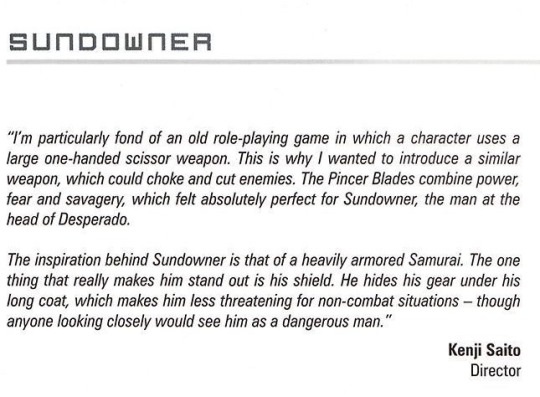


4. sundowner's QR-code is actually scannable and it leads to a website. i wouldn't put a code on my forehead for no reason, and i wouldn't put sundowner as a guy who just has a code on his head for literally no reason. i actually have two theories as to what the code leads to...:
it leads to the manufacturer of the cybernetic parts sundowner uses' website for a free promotion (and even just an advertisement for the curious folks, really).
it leads to a youtube video, specifically a rickroll or another meme song to insert his dominance over others.
obviously, it could be so much more than just those two, but c'mon, if the codes were blank, that'd be an entire endless trolling opportunity wasted!
5. sundowner's machetes can be at least 111 degrees fahrenheit (about 44 degrees celsius) but could be at most 550 degrees fahrenheit (about 288 degrees celsius). oh wow, finally some actual science? well, not really. remember sundowners introductory scene, where he killed the two guards and kidnapped n'mani? remember the second guy he killed, where he cut his entire head off? this is where the theory about the burning blades kicks in. in the cutscene, there's a distinct sizzling sound from where he's cutting the guy's head as a trail of steam or smoke came off of where said cut was. this is proof that sundowner is actually cauterizing (the act of burning someone's wounds with a very hot tool) the poor guy while he's already getting his head cut off!
with such facts, it can be assumed that his machetes are as hot as the sun.
6. sundowner hasn't grown up from his childhood (yet). i know this is a low blow, but what if he was taught to love war by his parents, specifically his father or another male adult figure in the family? what if he was bullied by the kids at his school because of his average grades in school and his family's financial status hindering him to have such fancy toys as the others? what if he was actually the bully at school? as he says right before his intense battle against raiden...:

7. another biased one, as always: surprisingly, unlike monsoon, sundowner could've be saved, but there's a low chance of that ever happening. consider his struggles against monsoon when they were both young. sundowner has been in more wars, but hasn't experienced as much stuff as monsoon in my opinion. sure he may be the leader of desperado, but that's because of how tough and strong he is compared to the others. at his fight with raiden, it's well established that the others have been killed off (rip misty and monsoony), and that only he's left. sure, he may have sam, but sam was recruited only because of monsoon. he's alone against jack and he knows this. but... this does give him an opportunity to live, albeit a small one. "either step down from desperado or die" could've been proposed, but one; raiden's a cold-blooded killer, and two; sundowner will very likely make up his own terrorist group again... but imagine the possibilities...
about 11 hours later and this post being wiped out once after i was almost done with it, i'm finally finished! this was surprisingly more entertaining and fun than what i expected. maybe sundowner isn't that scary of a guy after all...
(i'm joking. he still scares me.)
of course, you can ask me about who i should do next through reblogs or replies! i'm always eager on researching characters for the public!
#scratchy opinions#metal gear rising#metal gear revengeance#mgr#mgrr#metal gear sundowner#sundowner#metal gear headcanons#headcanon
28 notes
·
View notes